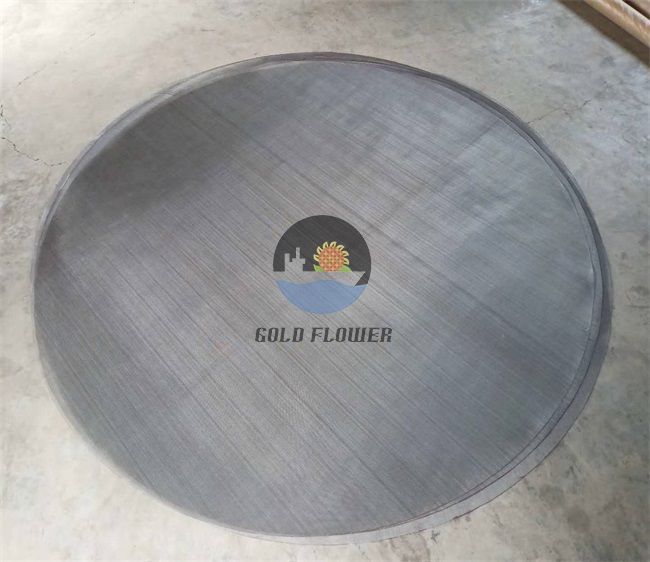Nov . 09, 2024 07:26 Back to list
Understanding CE Certification for Metal Cloth Products and Its Importance in Safety Standards
Understanding CE Certification for Metal Cloth A Comprehensive Guide
In an increasingly globalized market, adhering to safety and quality standards is crucial for manufacturers and suppliers. One of the most recognized certification marks in Europe is the CE mark, which signifies that a product meets specific health, safety, and environmental protection standards. This article aims to explore the significance of CE certification particularly for metal cloth, its benefits, and the certification process involved.
What is Metal Cloth?
Metal cloth, often referred to as metal mesh or wire mesh, is a versatile material made from strands of metal woven together. It has applications spanning various industries, including construction, automotive, filtration, and protective barriers. Due to its durability, strength, and resistance to environmental factors, metal cloth is favored for both functional and aesthetic purposes in architectural designs.
Importance of CE Certification
CE certification is crucial for products sold within the European Economic Area (EEA). It ensures that the product complies with EU legislation and is deemed safe for use. For metal cloth manufacturers, obtaining CE marking signifies that their products are suitable for the intended application, thus fostering consumer trust and expanding market opportunities.
Key Benefits of CE Certification for Metal Cloth
1. Market Access CE marking is mandatory for certain product categories sold in the EEA. Without it, manufacturers risk being barred from selling their products in European markets. CE certification serves as a passport, facilitating smoother entry into these lucrative markets.
2. Consumer Confidence The CE mark is a symbol of quality assurance. Customers often prefer products that are CE certified, as it signifies that the product has undergone rigorous evaluations to meet safety and performance standards.
3. Product Liability Protection CE certification can provide some level of legal protection for manufacturers. By ensuring adherence to safety standards, companies reduce the risk of liability claims arising from product defects or failures.
4. Enhanced Reputation For businesses, being CE certified can enhance credibility and reputation. It signals to partners and clients that the manufacturer is serious about quality and compliance with necessary regulations.
ce certification metal cloth

The CE Certification Process for Metal Cloth
Obtaining CE certification for metal cloth involves several key steps
1. Determine Applicable Directives The manufacturer must identify which EU directives apply to their metal cloth product. Common directives include the Construction Products Regulation (CPR) and safety directives specific to certain applications.
2. Conduct Risk Assessment This involves evaluating the potential risks associated with the metal cloth’s use and determining compliance with relevant standards. Key factors include the material properties, intended application, and safety in use.
3. Testing and Compliance The metal cloth must undergo testing to ensure it meets the necessary EN (European Norm) standards. This may involve laboratory tests, quality checks, and performance evaluations.
4. Technical Documentation Manufacturers must compile a technical file that includes comprehensive information about the design, manufacturing process, and compliance evidence. This file is critical during inspections and audits.
5. Declaration of Conformity After successfully completing the above steps, the manufacturer must draft a Declaration of Conformity, stating that the product complies with the relevant EU directives. This document must accompany the product when it is sold within the EEA.
6. Affixing the CE Mark Once the metal cloth is certified, the manufacturer can affix the CE mark on the product and its packaging, signaling compliance to customers and regulatory authorities.
Conclusion
CE certification for metal cloth is not just a bureaucratic requirement; it is a vital aspect of ensuring safety, quality, and marketability in the competitive European landscape. By understanding the importance of this certification and following the necessary steps for compliance, manufacturers can enhance their product offerings and ensure their success in the global market. Prioritizing safety and quality through CE marking not only benefits the manufacturer but also the end-users who rely on these materials for their projects and applications.
share
-
Stainless Steel Wedge Wire Mesh: Durable, Precision Filtration
NewsAug.23,2025
-
CE Certified 250 Micron Stainless Steel Mesh for Precision Filtration
NewsAug.22,2025
-
CE Certified 250 Micron SS Mesh - Precision Filtration & Strength
NewsAug.21,2025
-
CE Certified Woven Wire Mesh Filters | Premium Filtration Solutions
NewsAug.19,2025
-
High-Performance Particle Filters: Optimal Mediums & Applications
NewsAug.18,2025
-
Competitive Screen Mesh Price | 1/4", 1/8", 1/2" Wire Mesh Screens
NewsAug.17,2025

